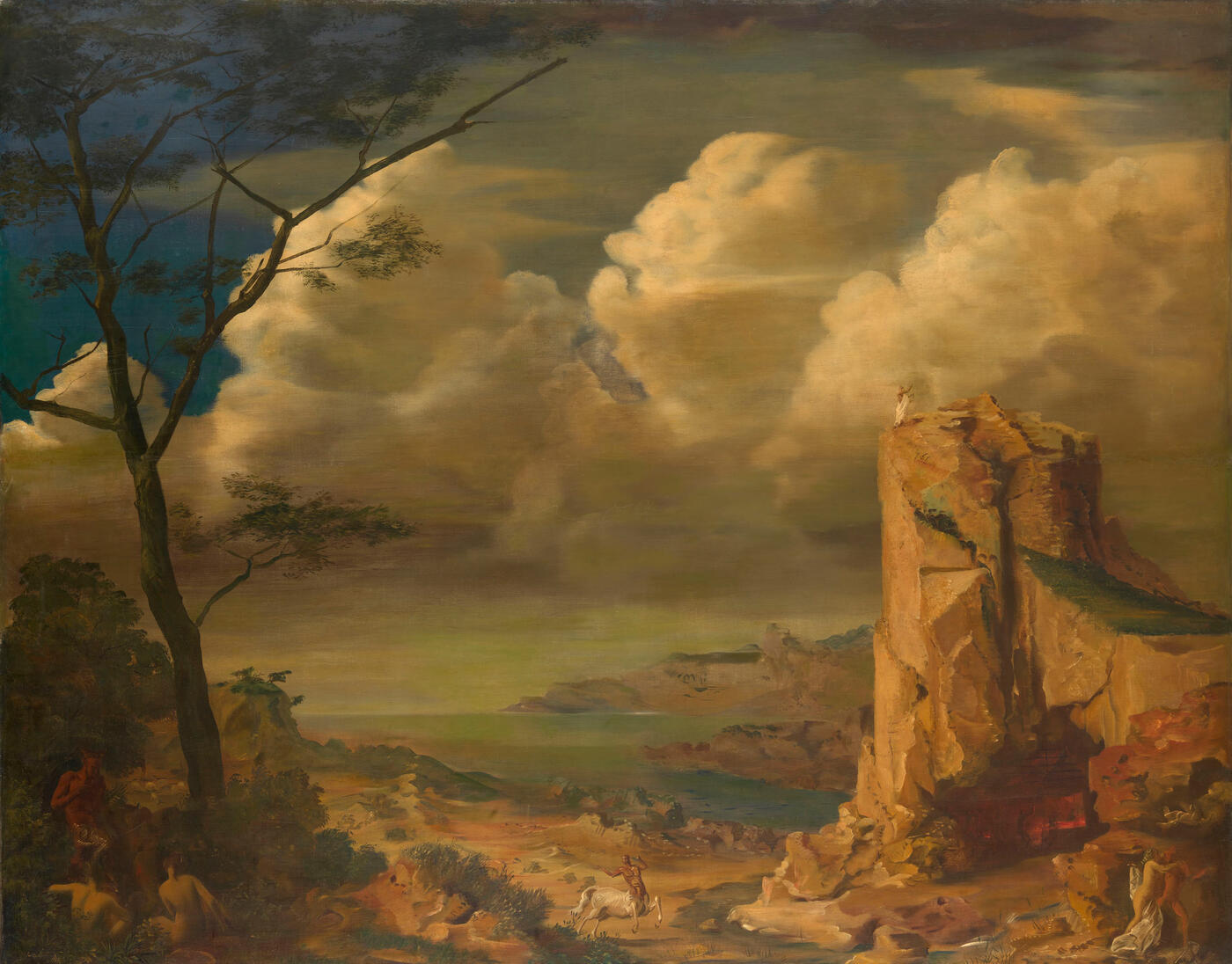25 - 28 November 2012 Russian Art Auctions
25 November 2012

* 146. YAKOVLEV, ALEXANDER (1887–1938)
Mythological Landscape, signed and dated 1928.
Oil on canvas, 168 by 212.5 cm.
165,000–220,000 GBP
Provenance: Anonymous sale; Fine 19th Century European Paintings and Watercolours, Phillips London, 12 March 1996, lot 125.
Anonymous sale; Russian Art Evening, Sotheby’s London, 24 November 2008, lot 33.
Private collection, Europe.
The work will be included in the forthcoming Alexander Yakovlev catalogue raisonné being prepared by Caroline Haardt de La Baume.
Alexander Yakovlev’s Mythological Landscape, a piece of high artistic worth, is a clear example of the beginning of technical and stylistic changes in the artist’s painting. An experienced and acknowledged master, he took many people by surprise at the end of the 1920s by changing the form of his painting from that of a “documenter and recorder of minutes”, enriching it with a new palette and new brushwork. Thereafter, in the words of Alexander Benois, Yakovlev “proved capable of creating real, inspired syntheses of nature”, his landscapes emerging as “imbued with genuine poetry” and “a note of lyricism hitherto unknown to him” appeared in his work.
All these elements are intrinsic to the Mythological Landscape which was painted in 1928 under the influence of Italian landscapes and Pompeian frescoes from the Museum of Naples. The painting is distinguished by its extraordinarily organic compositional structure and subtle combinations of colour, with Yakovlev giving free rein to his professionalism and desire to understand the art of the Old Masters, his love of ancient mythology and perfected classical form, but also a mature wish to free up his own painting with looser brushwork.
With his innate taste, sense of measure and harmony, Yakovlev, like the old European masters, recreated on canvas the majestic landscape of the Mediterranean, devoting a large part of the composition to a broad sky stretching to the horizon. The sense of immeasurable space emphasises the barely discernible mythical characters in it who are the inhabitants of the landscape. Judging by their appearance, the three figures in the lower right-hand corner are probably Venus, Adonis and, hovering over them, Cupid – a subject painted repeatedly by the Old Masters. Without competing with them in any way, Yakovlev simply supplements the landscape with depictions of mythological heroes. As Benois aptly remarked, the artist’s landscapes “do not serve as a backdrop to the figures but, on the contrary, they constitute the main content of the painting, while the figures serve rather to enliven them”.
Characteristically for the painter, he depicts a centaur galloping at full tilt in the central part of the foreground, an image that had attracted him from a young age. Yakovlev quite often identified himself with these mythical creatures, painting them constantly, and he sometimes used the image of a centaur as his signature, as in the drawing entitled My Friends (1925). It is no wonder the artist had a centaur emblem on the side of the motor car in which he travelled around Central Africa on the Citroen expedition in 1924–1925, and in 1928 he painted Death of a Centaur.
The artist showed this work – alongside other canvasses painted in the new, liberated manner – at his 1929 one-man exhibitions in Paris and Brussels. Among the 89 works that made up the exhibition at the Renaissance gallery in Paris and the 73 shown at the Kodak gallery in Brussels were paintings with subjects and images from ancient mythology. They included Penelope, Danae, Lot’s daughters, and others. It is entirely possible that Mythological Landscape was also shown at these exhibitions. A work titled Landscape did appear in the catalogues, but it is not known for certain precisely which landscape this was: catalogues of the 1920s did not describe the works and it was extremely rare for them to be reproduced. All that aside, in Mythological Landscape the painter not only achieves graphic resolution of the classical subject, but successfully accomplishes the painterly tasks involved, leaving no doubt as to its artistic value.
Dr Elena Yakovleva, Art Historian
Notes on symbols:
* Indicates 5% Import Duty Charge applies.
Ω Indicates 20% Import Duty Charge applies.
§ Indicates Artist's Resale Right applies.
† Indicates Standard VAT scheme applies, and the rate of 20% VAT will be charged on both hammer price and premium.